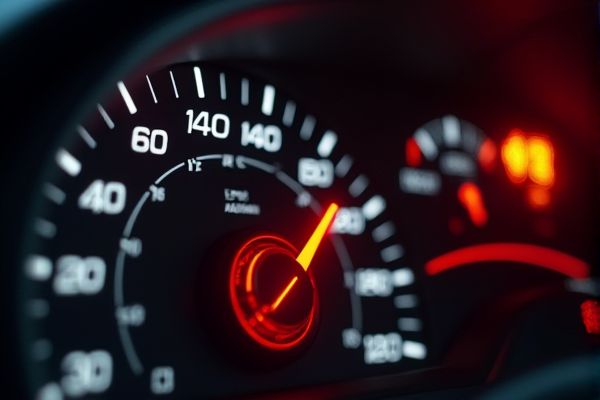
The Mini Clubman's check engine light indicates that the onboard diagnostics system has detected a fault in the engine performance or emissions control, often caused by issues such as sensor malfunctions, a loose gas cap, or misfires. Using an OBD-II scanner to retrieve specific error codes (like P0420 or P0171) is essential for pinpointing the exact problem and ensuring prompt repairs to maintain optimal vehicle efficiency and compliance.
Mini Clubman check engine light on meaning
Loose Gas Cap
A loose, damaged, or missing gas cap can cause the check engine light to turn on due to fuel pressure and emission issues.
Failing Catalytic Converter
A clogged or failing catalytic converter can lead to reduced fuel economy and performance issues.
Fouled Spark Plugs or Spark Plug Wires
Bad spark plugs can cause engine misfires, affecting performance and fuel efficiency.
Faulty Oxygen Sensor
A faulty oxygen sensor can disrupt the air-fuel mixture, leading to engine problems.
Mass Air Flow Sensor Issues
A malfunctioning MAF sensor can cause inefficient engine operation and trigger the check engine light.
Ignition System Faults
Problems with the ignition system can lead to engine misfires and performance issues.
Emissions Controls Issues
Faults in emissions control systems can trigger the check engine light.
Transmission Issues
Problems with the transmission can cause the check engine light to illuminate.
Old or Dead Battery
A weak or dead battery can trigger the check engine light.
Computer Output Circuit Issues
Faults in computer circuits can cause the check engine light to turn on.
For car users
If your Mini Clubman's check engine light comes on, immediately pull over safely and check that the gas cap is tightened, then note any unusual sounds or performance issues, and reduce driving until you can get a professional diagnostic. Prioritize gathering any recent maintenance records and dashboard alert data to share with a trusted mechanic, helping ensure that potential problems are identified and addressed promptly.
Ignoring the check engine light
Ignoring the Mini Clubman's check engine light can mean that underlying issues--such as sensor malfunctions, emissions system failures, or engine component degradation--remain undiagnosed, leading to progressively reduced performance, decreased fuel efficiency, and heightened risk of major engine damage. Over time, this neglect may result in costly repairs, including potential engine overhaul or replacement of critical emissions components, while also compromising overall vehicle safety.
How to reset?
To reset the Mini Clubman's check engine light, first use an OBD-II scanner to retrieve and clear diagnostic trouble codes or disconnect the battery for about 15 minutes, ensuring that all engine-related issues are properly addressed. Remember to verify sensor data and engine performance after the reset, and if the light reappears, seek professional diagnostics to prevent potential engine damage.
When a Mini Clubman's check engine light illuminates, initial diagnostics and minor sensor replacements typically cost between $100 and $300, while more complex engine or emissions issues may result in repair costs exceeding $1000. Prioritizing data-driven maintenance, it's essential to run a full diagnostic scan to identify specific error codes, ensuring accurate repair estimates tailored to the precise issue.
Future prevention
Perform regular maintenance by following Mini Clubman manufacturer guidelines, which include routine oil changes, spark plug inspections, oxygen sensor tests, and catalytic converter checks to preempt issues that cause the check engine light to activate. Additionally, use high-quality fuel, verify proper tire pressure, and address any dashboard warnings immediately to ensure that sensor readings remain accurate and the engine operates at optimal performance.
